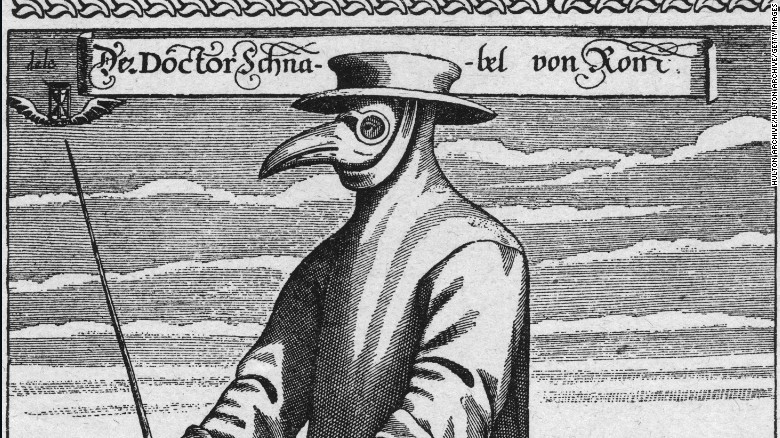पूरी दुनिया में कहीं भी आज भी लेप्रोसी (कोढ़ )और तपेदिक के मामले देखने को मिलते हैं। प्लेग के आज भी साल भर में तीन हज़ार मामले सामने आ जाते हैं।अलबत्ता स्माल पॉक्स (चेचक )के बारे में ही आप ऐसा ले देकर कह सकते हैं के इसका उन्मूलन हो चुका है।
स्कारलेट फीवर (लोहित ज्वर )एक संक्रामक ज्वर है जिसमें शरीर बहुत तपता है और त्वचा पर चकत्ते निकल आते हैं और जिसकी छूत एक से दूसरे व्यक्ति को लग जाती है योरोप में बना हुआ है स्कर्वी (विटामिन -C की कमी से होने वाला एक रोग है जिसमें मसूढ़ों से खून आने लगता है )भी कायम है विश्व के कई हिस्सों में। रोगों का उन्मूलन एक दिवास्वप्न ही बना हुआ है।
आइये एक विहंगम दृष्टि डालते हैं उन रोगों पर जिनका ख़ात्मा हुआ मान लिया गया था :
(१ )प्लेग :साल २०१७ में अमरीका में इसके १६ मामले दर्ज़ हुए थे -जबकि युनाइटिड किंडम (U.K)में स्कर्वी और स्कारलेट फीवर के मामले बढ़े रहे हैं .
जिन हालातों में दुनियाभर के लोग आज जीवन यापन कर रहे हैं वे हालात और रोज़ ब रोज़ नै- नै दवाओं का अवतरण रोगों के इस सांप सीढ़ी जैसे खेल का नियंत्रण करता लगता है।रोग शमन और रोगों का फैलाव सहजीवन हो जाता है।
चौदहवीं सदी में इसी प्लेग ने जिसे तब ब्लेक डेथ कहा जाता था योरोप के तकरीबन ६०% लोगों का सफाया ही कर दिया था।
प्लेग के वेक्टर्स फैलावनहार मूषक और गिलहरी पर पोषित परजीवी पिस्सू रहे हैं.यह पक्षहीन कीट -फ़्ली -पशुओं और मनुष्यों के शरीर में बसेरा बना लेता है।
भले दवाओं ने ,टीकों (वैक्सीन्स )ने इसके प्रकोप को धूमिल किया लेकिन इसका उन्मूलन मान लिया गया हो नहीं पाया है। यह जब तब मुंह उठा लेता हैं। अमरीका जैसे विकसित देशों में आज भी साल में इसके दो से दस तक मामले प्रकाश में आ जाते हैं। २०१७ में इसके १६ मामले दर्ज़ हुए।
अन्यत्र यह रोग कायम है विश्व स्तर पर इसके एक से तीन हज़ार मामले साल भर में सामने आ जाते हैं। अफ्रिका ,दक्षिणी अमरीका और भारत का आप धड़ल्ले से नाम ले सकते हैं। इनमें भी मडागास्कर ,पेरू और भारत शीर्ष पर हैं।
(२ )रूबेला -जर्मन मीज़ल्स -यह एक बेहद संक्रामक रोग है जो विषाणुओं से फैलता है जिसमें लसिका ग्रंथियां फूल जातीं हैं तथा त्वचा पर छोटे छोटे लाल दाने या चकत्ते उभर आते हैं। बच्चों को ही यह निशाने पर लेता है। अमरीका में इसे रूबेला कहा जाता है।
उन गर्भवती माताओं के मामले में यह गर्भस्थ के लिए जन्म पूर्व की विकृतियों की भी वजह बन सकता हैं जिनमें माताओं को इसका प्रतिरोधी टीका नहीं लगा है। गर्भावस्था में माँ को इसकी छूत लगने पर गर्भस्थ माँ के पेट में ही मर सकता है।
१९७० में रूबेला का टीका सामने आया। इसके चलन प्रचलन के बाद अनेक विकाशशील देशों से तकरीबन इस रोग का सफाया होता दिखा। अप्रैल २०१५ में अमरीकी क्षेत्र को इस रोग से मुक्त मान लिया गया जहां लगातार पंद्रह बरसों तक रूबेला उन्मूलन अभियान चला है।
जहां टीकाकरण सबको उपलब्ध नहीं है उन देशों में इसका संक्रमण अभी भी मौजूद है। इस मामले में अफ्रिका और दक्षिण पूरबी एशिया का नाम लिया जा सकता है। एक लाख दसहज़ार शिशु जन्म से ही यहां " कंजेनिटल रूबेला सिंड्रोम "से ग्रस्त पैदा हो रहे हैं।
(३ )लेप्रोसी (कोढ़ ):दीर्घावधि रोगी के संपर्क में रहने वालों को आज भी इस रोग की छूत लगती है। स्नायुओं (नसों ,नर्व )तथा चमड़ी की कोशिकाओं को यह रोग नुक्सान पहुंचाता है। इलाज़ न मिलने पर असरग्रस्त त्वचा का घाव विरूपण भी हो जाता है। इसे इसीलिए कुष्ठ रोग भी कहा जाता है क्योंकि इसमें शरीर के असर ग्रस्त अंग गलके गिर भी सकते हैं।मदर टेरेसा को कुष्ठ रोगियों की सेवा के लिए विश्व भर में जाना गया है।आपने भारत को ही अपनी कर्मभूमि बनाया था।
आपके बारे में एक किस्सा मशहूर है। आप कलकत्ता के एक अमीर के द्वार पर गोद में एक शिशु को लेकर पहुंची। द्वार खटखटाया और कहा इसकी परवरिश के लिए कुछ देने की कृपा करें। अमीर ने उनेक आगे बढे हुए हाथ पे थूक दिया जिसे स्वीकार करते हुए आपने कहा -ये तो मेरे लिए था अब इसके लिए भी तो कुछ दो। कहते हैं वह अमीर कालान्तर में सब कुछ छोड़कर कुष्ठ रोगियों अन्य गरीब गुरबों की सेवा में जुट गया। उसे बेहद की आत्मग्लानि हुई।
डैपसोन दवा के १९४५ में सामने आने पर इस रोग का जमकर मुकाबला किया गया लेकिन जल्दी ही इसका जीवाणु दवा रोधी साबित हुआ दवा का ही भक्षण करने लगा -इसे कहते हैं अनुकूलन।
१९७० आदि के दशक में इसी दवा प्रतिरोध ने अनेक और दवाओं के अन्वेषण को जन्म दिया। बेशक गत तीन दशकों में कुष्ठ रोगियों की संख्या में बेहद कमी आई है। १९८५ के बावन लाख (52 lakh ) मामलों के मुकाबले दुनियाभर में २०१३ में घट के दो लाख सोलह हज़ार मामले ही दर्ज़ हुए हैं। लेकिन भारत के कुछ इलाकों ,ब्राज़ील और इंडोनेशिया में आज भी यह रोग एक समस्या ही बना हुआ है . अस्सी फीसद से भी ज्यादा मामले यहीं दर्ज़ हो रहे हैं।
(४ )गाउट (गठिया या एक प्रकार का जोड़ों का दर्द ):आर्थराइटिस ही है यह एक प्रकार की जिसमें जोड़ों के भीतर युरिकेसीड (uric acid )और युरेट्स(urates ) के क्रिस्टल ही बन जाते हैं। पाचन के स्वाभाविक उप -उत्पाद हैं ये अम्ल और ये अवांछित क्रिस्टल।इस रोग में असरग्रस्त जोड़ में दर्द के अलावा संक्रमण सोजिश और लाली लिए दुखन भी होती है।एक विस्तृत लेख गाउट पर अलग से इस चिठ्ठे पे पूर्व में लिखा जा चुका है।
पहले मिश्र देश के राजा -महाराजा शराब के साथ विलासिता पूर्ण अतिरिक्त कैलोरी वाला भोजन लेते थे उनमें ही इस रोग के मिश्र देश में सबसे पहले दर्शन हुए थे।इसीलिए इसे 'किंग्स- डिजीज' भी कहा गया है।
ज़ाहिर है भ्रष्ट खानपान और जीवन शैली इसके मूल में रही है आज भी यही आलम है। इसीलिए विकसित देशों में इसका प्रकोप है। तिरासी लाख (83 lakh )अमरीकी ,उत्तरी अमरीका की ४ % वयस्क (बालिग़ ) आबादी इससे ग्रस्त है।योरोप में ग्रीस इसका शिखर छू रहा है जहां २०१० में इससे वहां की आबादी का ४. ७ ५ % ग्रस्त था।
(ज़ारी )
मूल आलेख आपके लिए अंग्रेजी में भी दिया जा रहा है :
The prevalence of gout varies significantly around the world -- at 4.75% Greece has the highest rate in Europe, according to a 2010 study.
स्कारलेट फीवर (लोहित ज्वर )एक संक्रामक ज्वर है जिसमें शरीर बहुत तपता है और त्वचा पर चकत्ते निकल आते हैं और जिसकी छूत एक से दूसरे व्यक्ति को लग जाती है योरोप में बना हुआ है स्कर्वी (विटामिन -C की कमी से होने वाला एक रोग है जिसमें मसूढ़ों से खून आने लगता है )भी कायम है विश्व के कई हिस्सों में। रोगों का उन्मूलन एक दिवास्वप्न ही बना हुआ है।
आइये एक विहंगम दृष्टि डालते हैं उन रोगों पर जिनका ख़ात्मा हुआ मान लिया गया था :
(१ )प्लेग :साल २०१७ में अमरीका में इसके १६ मामले दर्ज़ हुए थे -जबकि युनाइटिड किंडम (U.K)में स्कर्वी और स्कारलेट फीवर के मामले बढ़े रहे हैं .
जिन हालातों में दुनियाभर के लोग आज जीवन यापन कर रहे हैं वे हालात और रोज़ ब रोज़ नै- नै दवाओं का अवतरण रोगों के इस सांप सीढ़ी जैसे खेल का नियंत्रण करता लगता है।रोग शमन और रोगों का फैलाव सहजीवन हो जाता है।
चौदहवीं सदी में इसी प्लेग ने जिसे तब ब्लेक डेथ कहा जाता था योरोप के तकरीबन ६०% लोगों का सफाया ही कर दिया था।
प्लेग के वेक्टर्स फैलावनहार मूषक और गिलहरी पर पोषित परजीवी पिस्सू रहे हैं.यह पक्षहीन कीट -फ़्ली -पशुओं और मनुष्यों के शरीर में बसेरा बना लेता है।
भले दवाओं ने ,टीकों (वैक्सीन्स )ने इसके प्रकोप को धूमिल किया लेकिन इसका उन्मूलन मान लिया गया हो नहीं पाया है। यह जब तब मुंह उठा लेता हैं। अमरीका जैसे विकसित देशों में आज भी साल में इसके दो से दस तक मामले प्रकाश में आ जाते हैं। २०१७ में इसके १६ मामले दर्ज़ हुए।
अन्यत्र यह रोग कायम है विश्व स्तर पर इसके एक से तीन हज़ार मामले साल भर में सामने आ जाते हैं। अफ्रिका ,दक्षिणी अमरीका और भारत का आप धड़ल्ले से नाम ले सकते हैं। इनमें भी मडागास्कर ,पेरू और भारत शीर्ष पर हैं।
(२ )रूबेला -जर्मन मीज़ल्स -यह एक बेहद संक्रामक रोग है जो विषाणुओं से फैलता है जिसमें लसिका ग्रंथियां फूल जातीं हैं तथा त्वचा पर छोटे छोटे लाल दाने या चकत्ते उभर आते हैं। बच्चों को ही यह निशाने पर लेता है। अमरीका में इसे रूबेला कहा जाता है।
उन गर्भवती माताओं के मामले में यह गर्भस्थ के लिए जन्म पूर्व की विकृतियों की भी वजह बन सकता हैं जिनमें माताओं को इसका प्रतिरोधी टीका नहीं लगा है। गर्भावस्था में माँ को इसकी छूत लगने पर गर्भस्थ माँ के पेट में ही मर सकता है।
१९७० में रूबेला का टीका सामने आया। इसके चलन प्रचलन के बाद अनेक विकाशशील देशों से तकरीबन इस रोग का सफाया होता दिखा। अप्रैल २०१५ में अमरीकी क्षेत्र को इस रोग से मुक्त मान लिया गया जहां लगातार पंद्रह बरसों तक रूबेला उन्मूलन अभियान चला है।
जहां टीकाकरण सबको उपलब्ध नहीं है उन देशों में इसका संक्रमण अभी भी मौजूद है। इस मामले में अफ्रिका और दक्षिण पूरबी एशिया का नाम लिया जा सकता है। एक लाख दसहज़ार शिशु जन्म से ही यहां " कंजेनिटल रूबेला सिंड्रोम "से ग्रस्त पैदा हो रहे हैं।
(३ )लेप्रोसी (कोढ़ ):दीर्घावधि रोगी के संपर्क में रहने वालों को आज भी इस रोग की छूत लगती है। स्नायुओं (नसों ,नर्व )तथा चमड़ी की कोशिकाओं को यह रोग नुक्सान पहुंचाता है। इलाज़ न मिलने पर असरग्रस्त त्वचा का घाव विरूपण भी हो जाता है। इसे इसीलिए कुष्ठ रोग भी कहा जाता है क्योंकि इसमें शरीर के असर ग्रस्त अंग गलके गिर भी सकते हैं।मदर टेरेसा को कुष्ठ रोगियों की सेवा के लिए विश्व भर में जाना गया है।आपने भारत को ही अपनी कर्मभूमि बनाया था।
आपके बारे में एक किस्सा मशहूर है। आप कलकत्ता के एक अमीर के द्वार पर गोद में एक शिशु को लेकर पहुंची। द्वार खटखटाया और कहा इसकी परवरिश के लिए कुछ देने की कृपा करें। अमीर ने उनेक आगे बढे हुए हाथ पे थूक दिया जिसे स्वीकार करते हुए आपने कहा -ये तो मेरे लिए था अब इसके लिए भी तो कुछ दो। कहते हैं वह अमीर कालान्तर में सब कुछ छोड़कर कुष्ठ रोगियों अन्य गरीब गुरबों की सेवा में जुट गया। उसे बेहद की आत्मग्लानि हुई।
डैपसोन दवा के १९४५ में सामने आने पर इस रोग का जमकर मुकाबला किया गया लेकिन जल्दी ही इसका जीवाणु दवा रोधी साबित हुआ दवा का ही भक्षण करने लगा -इसे कहते हैं अनुकूलन।
१९७० आदि के दशक में इसी दवा प्रतिरोध ने अनेक और दवाओं के अन्वेषण को जन्म दिया। बेशक गत तीन दशकों में कुष्ठ रोगियों की संख्या में बेहद कमी आई है। १९८५ के बावन लाख (52 lakh ) मामलों के मुकाबले दुनियाभर में २०१३ में घट के दो लाख सोलह हज़ार मामले ही दर्ज़ हुए हैं। लेकिन भारत के कुछ इलाकों ,ब्राज़ील और इंडोनेशिया में आज भी यह रोग एक समस्या ही बना हुआ है . अस्सी फीसद से भी ज्यादा मामले यहीं दर्ज़ हो रहे हैं।
(४ )गाउट (गठिया या एक प्रकार का जोड़ों का दर्द ):आर्थराइटिस ही है यह एक प्रकार की जिसमें जोड़ों के भीतर युरिकेसीड (uric acid )और युरेट्स(urates ) के क्रिस्टल ही बन जाते हैं। पाचन के स्वाभाविक उप -उत्पाद हैं ये अम्ल और ये अवांछित क्रिस्टल।इस रोग में असरग्रस्त जोड़ में दर्द के अलावा संक्रमण सोजिश और लाली लिए दुखन भी होती है।एक विस्तृत लेख गाउट पर अलग से इस चिठ्ठे पे पूर्व में लिखा जा चुका है।
पहले मिश्र देश के राजा -महाराजा शराब के साथ विलासिता पूर्ण अतिरिक्त कैलोरी वाला भोजन लेते थे उनमें ही इस रोग के मिश्र देश में सबसे पहले दर्शन हुए थे।इसीलिए इसे 'किंग्स- डिजीज' भी कहा गया है।
ज़ाहिर है भ्रष्ट खानपान और जीवन शैली इसके मूल में रही है आज भी यही आलम है। इसीलिए विकसित देशों में इसका प्रकोप है। तिरासी लाख (83 lakh )अमरीकी ,उत्तरी अमरीका की ४ % वयस्क (बालिग़ ) आबादी इससे ग्रस्त है।योरोप में ग्रीस इसका शिखर छू रहा है जहां २०१० में इससे वहां की आबादी का ४. ७ ५ % ग्रस्त था।
(ज़ारी )
मूल आलेख आपके लिए अंग्रेजी में भी दिया जा रहा है :
Story highlights
- Leprosy and TB are all still prevalent around the world
- Plague still affects up to 3,000 people a year
- To date, smallpox is the only disease to have ever been eradicated
(CNN)This year, the United States has recorded 16 cases of plague, while recent figures have revealed that in the UK, cases of "19th-century" diseases such as scurvy and scarlet fever are on the rise.
Changes to our living conditions and the development of medicines have affected the rise and fall of diseases, but they seldom disappear. To date, smallpox remains the only disease to have ever been eradicated.
More about 'Unseen Enemy'
Go to CNN.com/unseenenemy for more stories and resources about epidemics, pandemics and the CNN Films documentary, "Unseen Enemy."
Here are some often-forgotten diseases that still exist -- despite our best efforts to control them.
Plague
In the 14th century, plague -- known as the Black Death -- killed an estimated 60% of the European population. Plague is spread by fleas living on rodents, such as rats and squirrels, but the development vaccines and antibiotics, and improved living conditions, have curtailed the spread of the disease
Plague is rare in developed countries today, with roughly two to 10 cases reported in the United States annually, where there have been 16 cases so far this year.
But the disease persists elsewhere. The WHO reports 1,000 to 3,000 global cases of plague every year. Africa, South America and Asia have the greatest number of cases -- particularly Madagascar, Peru and India.
Rubella
The virus, which is passed to babies in the womb from unvaccinated mothers, can cause multiple birth defects as well as fetal death when contracted by women during pregnancy.
Rubella vaccinations first became available in 1970, helping many developed countries come close to eliminating the disease and in April 2015, the Americas became the first region to eliminate rubella, after a 15-year vaccination campaign.
But the infection remains in countries with low immunization coverage, particularly in Africa and south-east Asia. An estimated 110,000 babies are born with Congenital Rubella Syndrome every year.
Leprosy
Leprosy is a contagious disease transmitted by prolonged contact with infected people. It causes damage to nerve and skin cells resulting in disfiguring sores and permanent disabilities.
The first breakthrough in leprosy treatment came in 1945, with the drug dapsone, but bacteria soon became resistant. This lead to the development of a successful multidrug therapy in the 1970s.
The number of global leprosy cases has dropped significantly in the last 30 years, from 5.2 million in 1985 -- but there were still 216,000 cases in 2013. The disease is still a problem in parts of India, Brazil and Indonesia where more than 80% of cases occur.
Gout
Gout is a type of arthritis caused by the build up of uric acid or urates -- a natural by-product of digestion -- inside joints. This can lead to pain, swelling and redness. First identified by the Egyptians, Gout was once known as the "disease of kings" because of its links to excessive food and alcohol consumption.
Unhealthy lifestyles and obesity have caused dramatic increases of gout in developed countries, with the condition now affecting an estimated 8.3 million North Americans -- nearly 4% of the adult population -- according to one study.



कोई टिप्पणी नहीं:
एक टिप्पणी भेजें